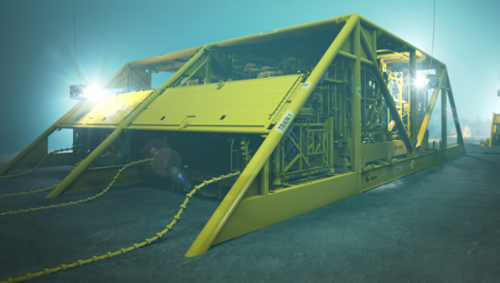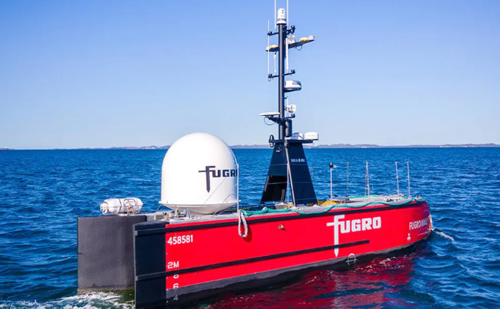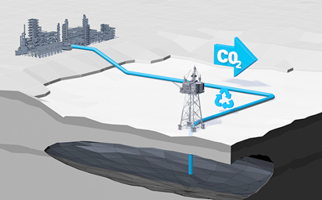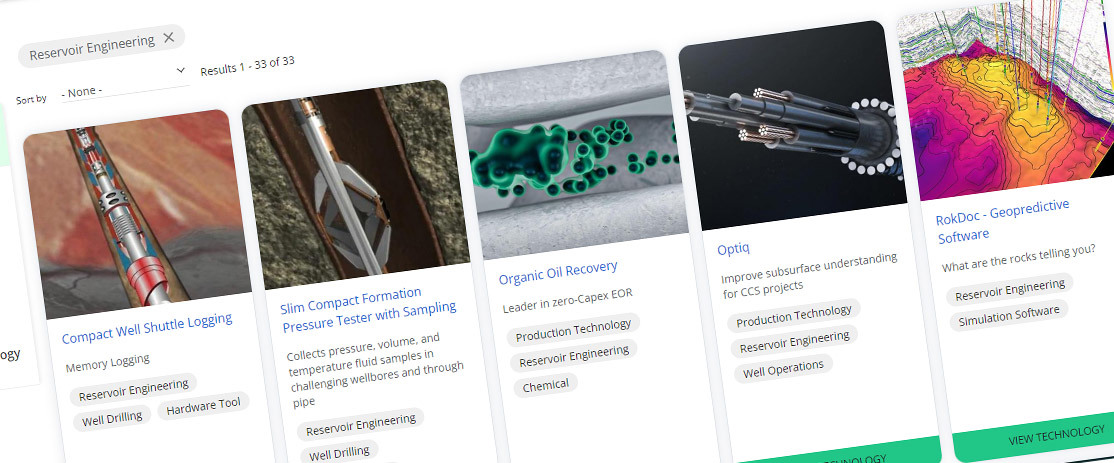Remote and autonomous inspection technologies are expanding rapidly, with control from onshore operations centres enabling remote survey operations and reducing the number of manned offshore visits and interventions.
Design advances include subsea high integrity pipeline protection systems, multiphase subsea pumps achieving maximum recovery from subsea tiebacks, and minimising the use of the energy-intensive gas lift.
Wave energy provides a novel technology to operate subsea infrastructure following an umbilical failure, and the wave energy device control system provides instrumentation connectivity.
Greater use of advanced analytics and AI in many areas, including automated pipeline feature recognition and automated riser annulus testing.
Subsea systems technologies
- Operators’ technology focus spreads across design, installation and operational phases of the subsea systems.
- Advances in pipeline design and more capable subsea processing equipment enable more distant and cost-effective subsea tie-backs for the development of UKCS resources.
- Seven operators carry at least five subsea technologies in their current plans. Eighteen operators are reporting at least one technology.
- This level of technology use is commensurate with the number of operators currently engaged in the development of subsea fields.
Over 42% of subsea technologies in operators’ plans are very recent or still under development, supporting the view that this is one of the most innovative areas for UKCS technologies.
Operators can rely on vendors to source advanced subsea design and equipment, by drawing on the UK’s world-leading supply chain in this area.
Operator-vendor partnerships are the next largest group to develop specific subsea capabilities to address field specific requirements (for instance for HPHT fields).
Readiness definitions: Early development (TRL 1-4), late development/pilot (TRL 5-7), early commercialisation (TRL 8), proven (TRL 9)
Technologies in pipelines, risers and jumpers are focused on cost efficient pipeline installation and maintenance/inspection processes, including jet trenching, active healing solutions for low insulation resistance caused by water ingress in power cores in jumpers, automated riser annulus testing, jumper heating for heavy oil, free span scanners and add-ons for pigging tools. New this year is riser integrity scanning with a pipeline crawler.
- Integrity scanning for risers: Using a pipe scanner and a subsea crawler.
- TRL 9 commercially available (NEW)
- Active healing solution for low insulation resistance: A preventative and active 'healing' solution for low insulation resistance caused by water ingress.
- TRL 9 commercially available
- Jet trenching: Use of jet trenching as an alternative to plough burial to increase CAPEX efficiency.
- TRL 9 commercially available
- Riser annulus testing: Use of proprietary automated riser annulus testing kit delivers consistency of results.
- TRL 9 commercially available
| Technology Example: | |
|---|---|
|
PAT is a fully automated tool for integrity testing of the riser annulus of flexible risers either using pressure or vacuum. PAT can also be used as a retrofittable, temporary, or permanent riser vent gas monitoring solution. Technology example link |
 |
- Riser motion sensor and data logger: Continuous monitoring of the riser movements.
- TRL 9 commercially available
- Subsea inspection free span scanner: Add-on pigging tool to measure free spans, currently being developed.
- TRL 1-4 early development
- Remote/local jumper heating: System to provide local heating of subsea jumpers to overcome high viscosity encountered during start up.
- TRL 1-4 early development
This sub-category includes improved instrumentation for and new methods of umbilical fault-finding, new generation control systems being adopted by operators, a subsea HIPPS system and combined subsea utilities (power and comms). New this year are a gravity-based manifold and umbilical, and emerging subsea control system obsolescence solutions.
- Gravity based manifold and umbilical: Project currently in execution phase, umbilical and manifold manufacture on-going. NSTA note: This type of manifold does not require foundations or piling. Usually the manifold structure has built in mud mats, and has solid steel or concrete weights installed after subsea deployment.
- TRL 9 commercially available (NEW)
- Subsea HIPPS: Pipeline overpressurisation protection system.
- TRL 9 commercially available
- Low IR remedial technology: Installation of low insulation resistance recovery technology.
- TRL 9 proven technologies
- Subsea controls obsolescence solutions: Reverse engineering of subsea control systems to minimise full system replacement. Various OEM studies on-going to assess minimal impact modification extending design life.
- TRL 5-7 late development/pilot (NEW)
- Subsea 2.0 control system: NSTA note: Vendor solution to subsea control system obsolescence, usually replacement subsea control modules and new spec. connecting cables and hydraulic hoses. New generation subsea control system.
- TRL 5-7 late development/pilot (NEW)
- TRL 5-7 late development/pilot (NEW)
Focus on long distance tiebacks and use of technologies in subsea processing and boosting is reported. Expanding subsea facilities while maximising available platform deck space with subsea processing, including subsea gas compression and multiphase pumping to enhance tieback distance is noted.
- Multiphase subsea pumps: Achieving maximum recovery from subsea tiebacks and minimising the use of the energy-intensive gas lift.
- TRL 9 commercially available
- Subsea gas compression systems: Operator looking at subsea gas compression. Reliable gas compression facilities in a subsea environment.
- TRL 8 early commercialisation
| Technology Example: | |
|---|---|
|
Aker’s conventional subsea gas compression system includes a subsea separator, motor-compressor and pump units. They are used for high capacity applications.
|
 |
Advances in autonomous vessel design, including both subsea and surface modes of deployment, to enable unmanned survey and subsea inspections remotely from the host vessel are reported.
Diverless methods of scanning pipelines and risers, 3D data analysis on mooring chains, and video sharing for air diving on moorings are also included. Emerging technologies include AI for automatic recognition of pipeline features.
New this year are crawler-based camera systems for internal riser inspections, complex geometry jacket joint weld inspection using time of flight diffraction, and jacket weld inspection using alternating current field measurement.
- J-Tube survey: Visual inspection system for internal survey searching for weld defects and wall dents within a vertical J-Tube using digital IPEK pan and tilt colour camera (RCX90) coupled with a crawler system.
- TRL 9 commercially available (NEW)
- Complex geometry jacket joint weld inspection: Node Scanner using time of flight diffraction.
- TRL 9 commercially available (NEW)
- Jacket weld inspection ACFM: Detection of surface breaking cracks using alternating current field measurement.
- TRL 9 commercially available (NEW)
- TRL 9 commercially available (NEW)
- 3D data analysis on mooring chains: Mapping and testing post mooring recovery including break test and fatigue assessment. Recommends links to be scanned, develops testing programme and completes the test. Provides a comparison from the original links to assess corrosion rate over the period in service.
- TRL 9 commercially available
- TRL 9 commercially available
- RAS autonomous vessels: Surface and ROV Inspections: Autonomous surface vessel acts as a autonomous mothership, carries a 450m depth rated full spec ROV and can be controlled from distant onshore operations centres, reducing both manning and emissions.
- TRL 8 early commercialisation
Fitted with an electric remotely operated vehicle (eROV), the USV mobilised at the end of April and was controlled from the Woodside-operated King Bay supply facility and Fugro’s remote operations centre in Perth, about 1,500 km (932 mi) south of the trunklines.
Technology example link
- Video sharing during air diving for mooring chain changeout: Video system installed onto the FPSO turret along with a telemetry system to send the video feed to receiving telemetry systems on the DSV and AHT. This allowed real time footage from underwater cameras within the turret to be viewed by all parties.
- TRL 9 commercially available
- Data viewing of Subsea Systems: Digital twin for subsea systems.
- TRL 5-7 late development/pilot
- AI: Using AI for automatic recognition of features of pipelines.
- TRL 1-3 early development
New this year is local power generation from a wave energy converter and energy management system which can be used for emergency back up for failed umbilicals, remote or long-distance tiebacks, and electrification of remote subsea facilities.
- Renewable subsea power: Wave energy power supply to subsea systems for new wells and remedials on existing wells. Trial/Pilot of power generation local to assets to reduce costs of replacement umbilical tieback. System is made up of the following:
- Ocean wave energy converter
- Subsea battery storage
- Subsea control system comprising topside and subsea equipment
- Residential Hybrid AUV and docking station
- TRL 8 early commercialisation (NEW)
SP is a Net Zero Technology Centre flagship project:
- “First-of-a-kind” commercial full-scale system to provide renewable power and communications offshore
- Combined system deployed, connected and operational as of February 2023 demonstration via 12-month deployment







